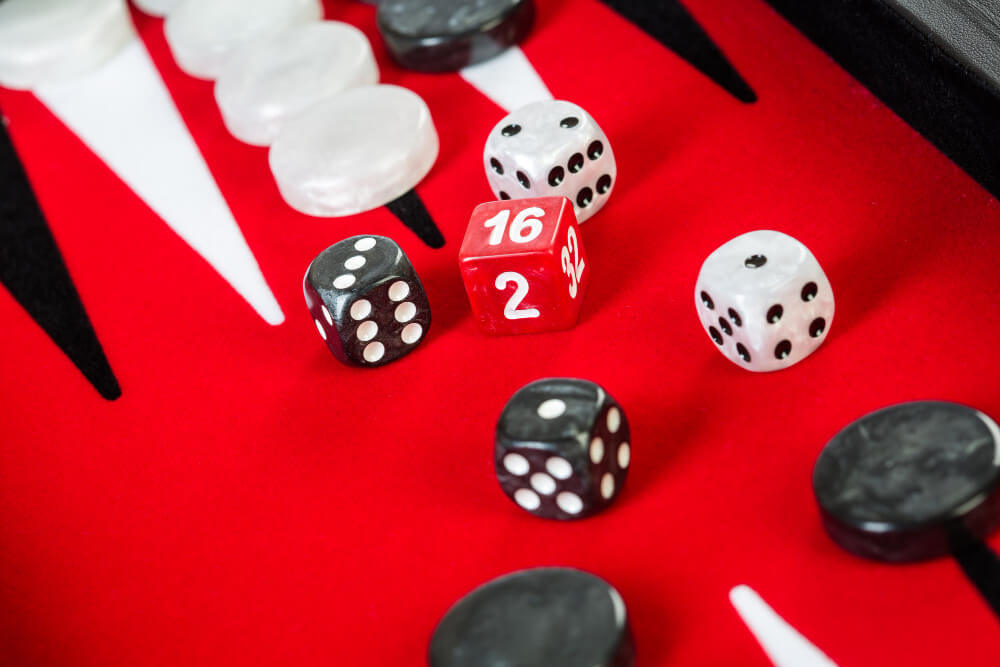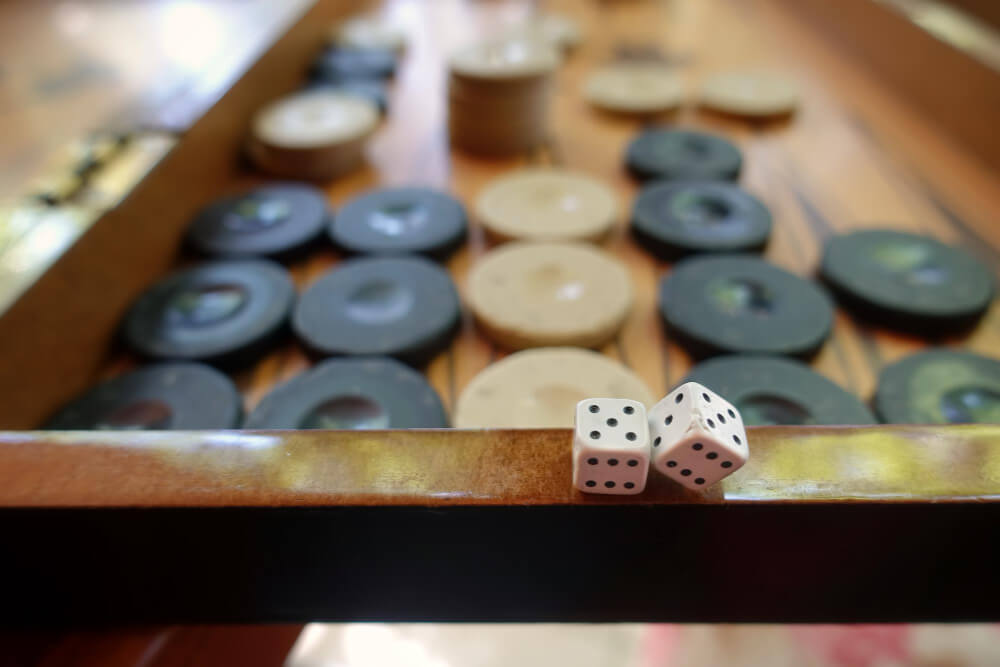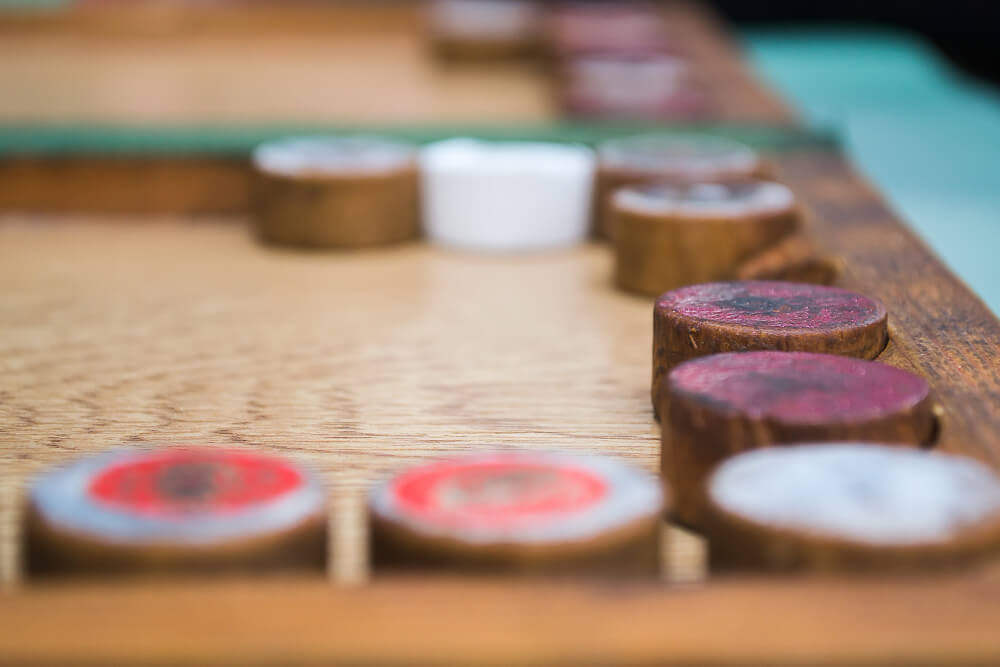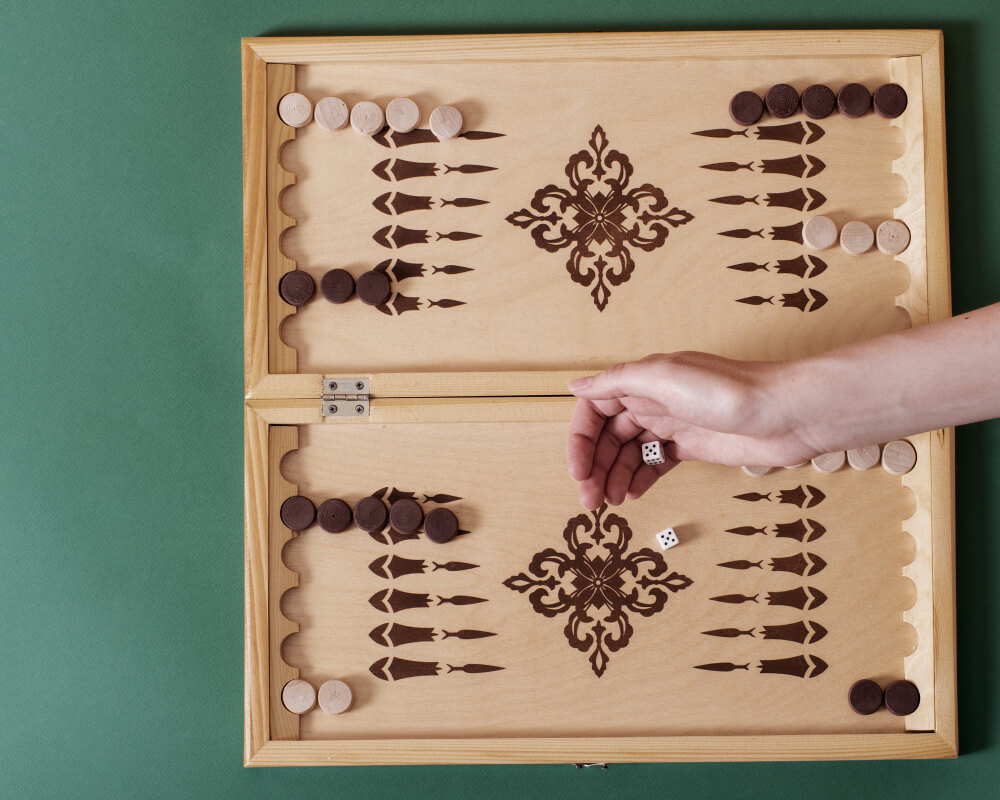
Backgammon Doubling Cube
Backgammon is a classic board game that has been around for centuries. It’s a two-player game of strategy and chance, with each player rolling dice

Backgammon is a classic board game that has been around for centuries. It’s a two-player game of strategy and chance, with each player rolling dice

Backgammon is a game that has been around for centuries, and it remains popular today. many people still enjoy playing in person with friends or

Are you a fan of the classic board game Backgammon? If so, then you know how important it is to properly care for and maintain

Are you looking for an exciting way to have fun with your friends or family? Then why not host a backgammon tournament at home? Backgammon

Backgammon is an ancient board game that people around the world have enjoyed for centuries. It’s a strategic, skill-based game and it can be both

Backgammon is an ancient board game that has been played for centuries in many cultures. It involves two players competing against each other to move

Backgammon is a game of luck and skill, combining elements of strategy and probability. Knowing the odds of success for each move you make can

When you start to learn something new, such as a game, skill, or any other subject, one of the first things you need to do

One of the keys to mastering Backgammon lies in understanding how to read and use backgammon notation. Backgammon notation provides detailed information about every move

Backgammon is a classic board game that has been enjoyed by people all over the world for centuries. It’s a challenging and strategic game of

Backgammon is one of the oldest board games in the world, having been around for at least 5,000 years. It’s a game of skill and

In this article, we will explore the best backgammon opening moves for every possible dice roll, helping players of all levels improve their game and
Backgammon is one of the oldest known board games, with origins dating back more than 5,000 years to ancient Mesopotamia. The game has evolved over time, with various versions played throughout history in different parts of the world.
The modern version of Backgammon can be traced back to the 17th century when it was first introduced in England. It quickly became popular among the aristocracy and upper classes, and it wasn’t long before it spread throughout Europe and eventually to the United States.
Today, Backgammon is played by millions of people worldwide, both in-person and online. Its enduring popularity is a testament to its timeless appeal and the simplicity of its gameplay, which combines strategy and luck in equal measure.
The Backgammon board consists of 24 triangular points or “wedges” arranged in two alternating colors. Each player has 15 checkers of their own color that are moved around the board according to the roll of two dice.
At the beginning of the game, each player places two checkers on their 24-point, three checkers on their 8-point, and five checkers on their 13-point. The remaining checkers are placed off the board.
The objective of the game is to move all of your checkers around the board in a clockwise direction and then bear them off the board before your opponent does the same. The player who bears off all of their checkers first wins the game.
The Backgammon board and setup may appear complex at first, but once you understand the basics, it is easy to grasp and play.
To play Backgammon, each player takes turns rolling two dice and moving their checkers around the board. The number rolled on the dice determines how many points a player can move their checkers.
These are just the basics of Backgammon gameplay, but once you understand these concepts, you will be able to play the game and enjoy its many nuances and strategies.
The basic rules of Backgammon are relatively simple, but the game also has many advanced concepts and strategies that players can use to gain an edge.
For example, players must move their checkers according to the number rolled on the dice, but they must also consider factors such as blocking their opponent’s checkers, hitting opponent’s checkers, and making “points” or “anchors” to secure their position on the board.
Additionally, if a player rolls doubles (i.e., the same number on both dice), they get to move four times instead of two. This can be an advantage, but it can also be a disadvantage if the player cannot use all four moves to their advantage.
The doubling cube also adds an additional layer of strategy to the game. Players must decide when to offer a double, when to accept or decline a double, and how to use the cube to their advantage during the game.
Overall, the rules of Backgammon are straightforward, but the many nuances of the game provide endless possibilities for strategy and gameplay.

Backgammon is a versatile game with many variations and different types of games. Some of the most popular variations include:
In addition to these variations, there are also different types of Backgammon games that can be played. For example, the most common type of game is a single game, where the winner is the first player to bear off all their checkers. However, players can also play matches consisting of multiple games, with the winner being the first to reach a certain number of points.
Whether you prefer traditional Backgammon or one of its many variations, there is always a new challenge and strategy to discover.
Backgammon has been a popular game for centuries and is enjoyed by millions of people around the world. In addition to casual play, there are also many competitive Backgammon tournaments and events held throughout the year.
The World Backgammon Championship is one of the most prestigious events, attracting top players from around the world to compete for the title. There are also many other high-profile tournaments and events, including the European Backgammon Tour, the American Backgammon Tour, and the UK Backgammon Open.
Backgammon has also gained popularity in the online gaming community, with many websites and apps offering the game for play and competition. Online Backgammon has the advantage of allowing players from all over the world to compete against each other, at any time of the day or night.
Overall, Backgammon’s popularity continues to grow, with players of all ages and skill levels enjoying the game both casually and competitively.
Backgammon is a game that combines both luck and strategy. Players must roll the dice to determine their moves, but they must also use their strategic skills to make the best possible moves based on the board position and the opponent’s moves.
Luck plays a significant role in Backgammon, as players cannot control the numbers they roll on the dice. However, skilled players can use their knowledge of probability and the board position to increase their chances of getting the numbers they need.
Strategy is also crucial in Backgammon, as players must make strategic decisions on every turn. They must decide which checkers to move, where to move them, and how to use the doubling cube to their advantage.
Overall, Backgammon is a game that rewards both luck and strategy. While luck plays a role in the outcome of the game, skilled players can consistently beat less-skilled opponents through their strategic gameplay.

Backgammon is a game that involves a lot of mathematics, particularly probability and statistics. Understanding the probabilities of rolling different numbers on the dice is essential for making optimal moves and maximizing one’s chances of winning.
In addition to probabilities, Backgammon also involves statistical analysis of game positions. This involves calculating the expected value of different moves based on the likelihood of various outcomes.
Players who understand the mathematical concepts behind Backgammon have a significant advantage over those who do not. They can use their knowledge to make better decisions, anticipate their opponents’ moves, and calculate the likelihood of different outcomes.
Overall, Backgammon is a game that challenges players to use their mathematical skills to make strategic decisions and increase their chances of winning.
Backgammon is a game that challenges the mind in several ways. It requires players to think strategically, calculate probabilities, and anticipate their opponents’ moves. As a result, it is often considered a game that improves cognitive skills and can even help prevent or delay the onset of cognitive decline.
Playing Backgammon regularly can help improve memory, attention, and problem-solving skills. It can also improve mental agility and flexibility, as players must be able to switch between different strategies based on the game position and their opponent’s moves.
Backgammon is also a social game, providing an opportunity for players to interact with each other and build social connections. This social aspect of the game can also be beneficial for mental health, as it can help reduce stress and promote a sense of belonging.
Overall, Backgammon is a game that challenges the mind and provides numerous benefits for cognitive function and mental health. It is a game that can be enjoyed by players of all ages and skill levels, both for its strategic gameplay and its social aspect.
Backgammon is a game that provides an enjoyable experience for players of all ages and skill levels. It combines luck and strategy, requiring players to think strategically while using their knowledge of probability and statistics. It also has numerous benefits for cognitive function and mental health, making it an ideal game for improving the mind. Whether played casually or competitively, Backgammon is sure to provide hours of fun and engaging gameplay.